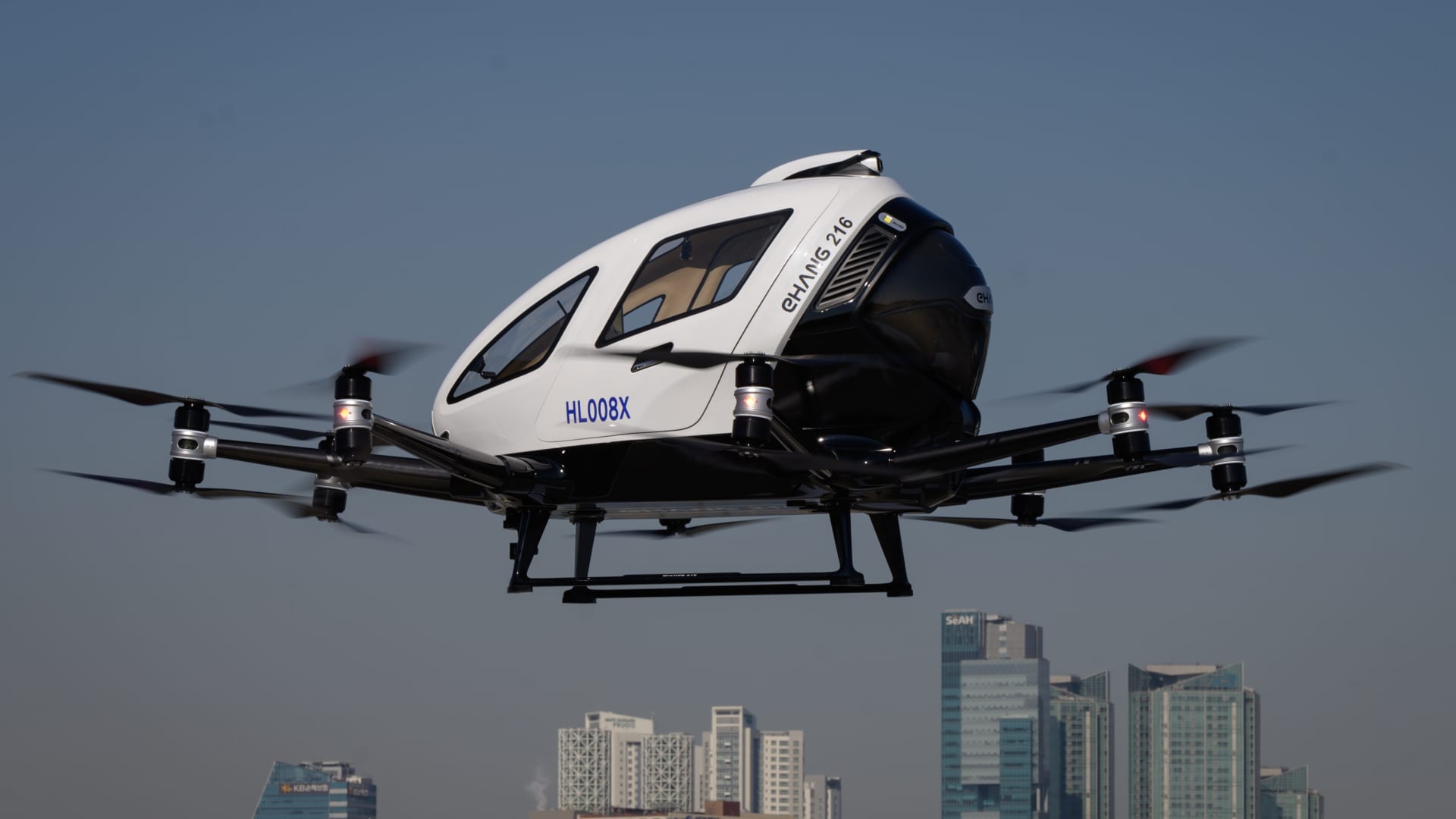I would never sit in something like this. The idea of an autonomous airborne vehicle seems terrifying to me.
Forget automation, I’d never trust an air vehicle for anything but extremely exceptional rides. Most technical difficulties encountered in a car would be deadly in these aircrafts, and they don’t have the decades of strong regulations that the aviation industry does
Last I looked, current commercial aircraft can do pretty much everything on their own but land.
checks
Looks like they can land these days too, though it’s still the norm for the pilot to land.
https://executiveflyers.com/can-autopilot-land-a-plane/
Most modern planes have an autoland system that enables a plane to land automatically.
But, most pilots prefer to manually land a plane because they are more comfortable with having more control over a plane during such an important part of a flight.
Most pilots also only use autoland when there’s low to zero outside visibility. And pilots are also legally restricted on how often and when they can use autoland.
I also recall that after that collision when a Swiss air traffic controller was trying to work two ATC positions some time back, it was clarified that for collision avoidance – probably the most-critical task an air traffic controller deals with – if a human air traffic controller tells the pilot to do one thing and the computer tells the pilot to do something else, you disregard the human and obey the computer, so in practice computers mostly do or can run the situation today.
https://en.wikipedia.org/wiki/2002_Überlingen_mid-air_collision
On the night of Monday, 1 July 2002, BAL Bashkirian Airlines Flight 2937, a Tupolev Tu-154 passenger jet, and DHL International Aviation ME Flight 611, a Boeing 757 cargo jet, collided in midair over Überlingen, a southern German town on Lake Constance, near the Swiss border. All of the passengers and crew aboard both planes were killed, resulting in a total death toll of 71.
The official investigation by the German Federal Bureau of Aircraft Accident Investigation (German: Bundesstelle für Flugunfalluntersuchung -BFU) identified the main cause of the collision to be a number of shortcomings on the part of the Swiss air traffic control (ATC) service in charge of the sector involved, as well as ambiguities in the procedures regarding the use of the traffic collision avoidance system (TCAS) on board.
Basically, the Russian plane followed the human ATC instructions, and the DHL plane followed the TCAS computer’s instructions and collided.
At 23:34:42 CEST (21:34:42 UTC), less than a minute before the crash, Nielsen realized the danger and contacted Flight 2937, instructing the pilot to descend to flight level 350 (1000 ft lower) to avoid collision with crossing traffic (Flight 611). Seconds after the crew of Flight 2937 initiated this descent, their TCAS instructed them to climb, while at about the same time the TCAS on Flight 611 instructed the crew of that aircraft to descend.: 111–113 Had both aircraft followed those automated instructions, the collision would not have occurred.: 34
Flight 611’s pilots followed their TCAS instructions and initiated a descent, but could not immediately inform Nielsen because the controller was dealing with Flight 2937. The crew of Flight 2937, already descending as instructed by Nielsen,: 104–106 disregarded their TCAS instruction to climb. Thus, both planes were now descending.
Unaware of the TCAS-issued alerts, Nielsen repeated his instruction to Flight 2937 to descend, giving the crew incorrect information as to the position of the DHL plane (telling them that the plane was to the right when it was in fact to the left).: 76 About eight seconds before the collision, Flight 611’s descent rate was about 12 m/s (2,400 ft/min), not quite as rapid as the 13 to 15 m/s (2,500 to 3,000 ft/min) range advised by the TCAS.
Flight 611, responding to the developing situation, increased its descent rate.: 6–9 Eight seconds before the collision, Flight 2937’s crew became aware of the situation when they gained visual sight of Flight 611 incoming from the left, and, two seconds before the collision, obeyed their TCAS instruction and attempted to put the aircraft into a climb.
By then the collision was inevitable. The aircraft collided at 23:35:32 CEST (21:35:32 UTC), at almost a right angle, at an altitude of 10,630 m (34,890 ft), with Flight 611’s vertical stabilizer slicing completely through Flight 2937’s fuselage just ahead of the wings. Flight 2937 broke into several pieces, scattering wreckage into the Brachenreute neighborhood over a wide area. The nose section of the aircraft fell vertically, while the tail section with the engines continued, stalled, and fell.
Flight 611, now with 80% of its vertical stabilizer lost, struggled for a further 7 kilometres (4.3 mi; 3.8 nmi) before crashing into a wooded area close to the village of Taisersdorf at a 70° downward angle. Each engine ended up several hundred meters away from the main wreckage, and the tail section was torn from the fuselage by trees just before impact.: 19–33 All 69 people onboard Flight 2937 and both crew members on board Flight 611 died.: 9
TCAS and conflicting orders
The accident raised questions as to how pilots must react when they receive conflicting orders from TCAS and ATC. TCAS was a relatively new technology at the time of the accident, having been mandatory in Europe since 2000.: 45 When TCAS issues a resolution advisory (RA), the pilot flying should respond immediately by directing attention to RA displays and maneuvering as indicated, unless doing so would jeopardise the safe operation of the flight, or unless the flight crew can assure separation with the help of definitive visual acquisition of the aircraft causing the RA.
In responding to a TCAS RA that directs a deviation from assigned altitude, the flight crew should communicate with ATC as soon as practicable after responding to the RA. When the RA is removed, the flight crew should advise ATC that they are returning to their previously assigned clearance or should acknowledge any amended clearance issued.
While TCAS is programmed to assume that both crews will promptly follow the system’s instructions, the operations manual did not clearly state that TCAS should always take precedence over any ATC commands.: 103 The manual described TCAS as “a backup to the ATC system”, which could be wrongly interpreted to mean that ATC instructions have higher priority.: 80 This ambiguity was replicated in the Tu-154 Flight Operations Manual, which contained contradictory sections. On the one hand, chapter 8.18.3.4 emphasised the role of ATC and describes TCAS as an “additional aid”,: 53 while chapter 8.18.3.2 forbade manoeuvers contrary to TCAS.: 103 The BFU recommended that this ambiguity should be resolved in favor of obeying TCAS advisories even when these were in conflict with ATC instructions.: 111
I agree. The reason I said what I said was that assumed that this taxi would not have a pilot in it. A lot of what planes do is automated but having a highly trained human pilot overseeing everything relieves me.
Agreed. I already don’t trust car automation. No way I’m going to add a 3rd dimension to the list of possible failures.
What makes car automation so difficult is the fact that you have to account for human drivers and pedestrians. Flight automation might actually be an easier problem if all the vehicles are autonomous from the start and communicate with each other. You’re also not flying bumper to bumper the way you drive on a road, so you have a much wider margin for collision avoidance.
It is at least a different problem, but adding in the element that any failure is a fatal one it just isn’t enough that there are less obstacles in the way.
Sure it’s a different problem, but chances of fatal accidents in cars are already significantly higher than in commercial air travel now. And same argument applies to planes.
Should make for some interesting fail videos on YouTube in the next few years.






